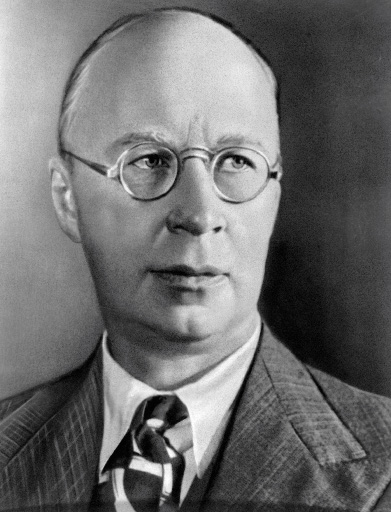Sergey Prokofiev (1891-1953)
Born April 23, 1891 in Sontsovka, Ukraine.
Died March 5, 1853 in Moscow.
Pushkin Waltzes, Op. 120
Composed in 1949.
First Performance: January 1, 1952, Moscow Radio performance, conducted by Samuel Samosud.
Instrumentation: 2 flutes, 2 oboes, English horn, 2 clarinets, bass clarinet, 2 bassoons, 4 horns, 2 trumpets, 3 trombones, tuba, timpani, percussion, strings.
In 1949 the Moscow Radio Committee commissioned Prokofiev for a work to commemorate the 150th anniversary of the birth of Alexander Pushkin (1799-1837).
The Pushkin Waltzes were written at his home in Nikolinaya Gora near Moscow. At the same time Prokofiev wrote a Cello Sonata, the symphonic suite Winter Bonfire, the ballet The Stone Flower.
The first waltz, an Allegro espressivo in F major begins with a quiet English Horn solo.
The solo is followed by a più animato clarinet solo. The flute joins the clarinet which leads to the strings playing the second theme which is a happy skipping waltz tune.
Another English horn solo introduces interplay with the strings playing the second. The first theme returns played meno mosso by the strings.
The clarinet solo returns, once again più animato, followed by a brief development in the strings of the second theme. The English Horn begins to reprise its solo, but is cut short by an abrupt end to the movement.
The second waltz, Allegro meditativo in C sharp minor, begins with the first theme played by unison strings.
A Clarinet solo quietly introduces the main theme.
The clarinet is answered by strings playing the second phrase of the theme. The entire theme is then taken up by the strings playing in the stratosphere.
Choose one of these examples. This second one is the complete phrase but might look squished.
This is immediately followed by a return of unison strings.
The oboes and English Horn then play a lilting dotted motif which is answered by a flowing phrase in the strings. This leads into a new scherzando theme played by the strings.
The strings are joined by flutes playing the scherzando theme but are interrupted by the lilting motif, now with the clarinets joining the fun. A brief ‘cello solo is cut short but the opening unison string theme. The clarinet solo returns with the second theme, which is then taken up by the strings. A brief coda brings the work to a soft conclusion.
Resources
[amazon template=iframe image&asin=B00009AQMI][amazon template=iframe image&asin=B000003J17][amazon template=iframe image&asin=B000003779]






